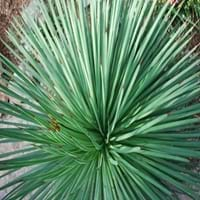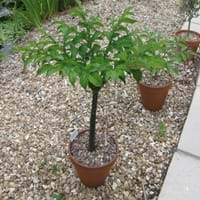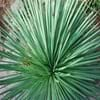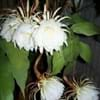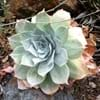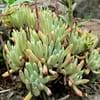Life Span
Perennial
Perennial
Type
Cactus or Succulent, Perennial
Perennial
Origin
Southwestern United States, Mexico
Northeastern United States, Mid-Atlantic United States, Southeastern United States, Central United States, Canada
Types
Not Available
Not available
Habitat
Desert, Dry areas, Semi desert
Mountain Slopes, subtropical regions, Tropical Climate, Warmer regions
USDA Hardiness Zone
12-15
4-9
Sunset Zone
10, 11, 12, 13, 14, 15, 16, 17, 18, 19, 20, 21, 22, 23, 24
Not Available
Habit
Rosette/Stemless
Clump-Forming
Flower Color
Yellow
Yellow, Orange
Flower Color Modifier
Not Available
Not Available
Fruit Color
Non Fruiting Plant
Not Available
Leaf Color in Spring
Green, Blue Green
Green
Leaf Color in Summer
Green, Blue Green
Green
Leaf Color in Fall
Green, Blue Green
Green
Leaf Color in Winter
Green, Blue Green
Green, Purple
Leaf Shape
Long Linear
bipinnate
Plant Season
Spring, Summer, Fall, Winter
Spring, Summer, Fall
Sunlight
Full Sun
Full Sun, Partial Sun, Partial shade
Type of Soil
Loam, Sand
Loam, Sand
The pH of Soil
Neutral, Alkaline
Acidic, Neutral, Alkaline
Soil Drainage
Well drained
Well drained
Bloom Time
Spring
Spring, Late Spring, Early Summer, Summer
Tolerances
Drought
Drought, Salt
Where to Plant?
Container, Ground, Pot
Container, Ground, Pot
How to Plant?
Leaf Cutting, Stem Planting, Transplanting
Seedlings, Tuber propagation, Tubers
Plant Maintenance
Medium
Medium
Watering Requirements
Average Water Needs
Requires plenty of water during the growing season, Requires regular watering
In Summer
Lots of watering
Lots of watering
In Spring
Moderate
Moderate
In Winter
Average Water
Average Water
Soil pH
Neutral, Alkaline
Acidic, Neutral, Alkaline
Soil Type
Loam, Sand
Loam, Sand
Soil Drainage Capacity
Well drained
Well drained
Sun Exposure
Full Sun
Full Sun, Partial Sun, Partial shade
Pruning
Remove damaged leaves, Remove dead branches, Remove dead leaves
Remove damaged leaves, Remove dead branches, Remove dead leaves
Fertilizers
No fertilizers needed
All-Purpose Liquid Fertilizer
Pests and Diseases
Insects, Red blotch
Aphids, Birds
Plant Tolerance
Drought
Drought
Flower Petal Number
Single
Single
Fragrant Bark/Stem
Not Available
No
Foliage Texture
Bold
Bold
Foliage Sheen
Matte
Matte
Attracts
Not Available
Birds
Allergy
Skin rash
Diarrhea, Excessive flatus, gastro-intestinal problems
Aesthetic Uses
Beautification, Landscape Designing, Showy Purposes
Not Used For Aesthetic Purpose
Beauty Benefits
Not Available
Not Available
Environmental Uses
Air purification
Air purification
Medicinal Uses
Nutrients
Boils, bowel syndrome, cholesterol-lowering, Colic, Digestive, Fiber, Low calories, Piles, Stimulates new cell growth, Weight management and satiety
Part of Plant Used
Leaves
Corms, Fibre, Root, Seeds, Tuber
Other Uses
Decoration Purposes, Showy Purposes, Used As Food
Traditional medicine, Used like flour
Used As Indoor Plant
Yes
No
Used As Outdoor Plant
Yes
Yes
Garden Design
Container, Dried Flower, Everlasting, Feature Plant, Rock Garden, Wall, Wildflower
Container, Edible, Feature Plant, Groundcover, Mixed Border, Rock Garden, Wall, Wildflower
Botanical Name
DASYLIRION
OPUNTIA humifusa
Common Name
Spoon flower, Common sotol
voodoo lily, snake palm, elephant yam
In Hindi
डेजर्ट चम्मच
Konjac
In German
Esslöffel
Teufelszunge
In French
Desert cuillère
Amorphophallus konjac
In Spanish
Desierto cuchara
Amorphophallus konjac
In Greek
Desert κουτάλι
Konjac
In Portuguese
colher Desert
Amorphophallus konjac
In Polish
Desert łyżka
konjac
In Latin
cochleari deserto
Konjac
Phylum
Magnoliophyta
Tracheophyta
Class
Liliopsida
Magnoliopsida
Order
Asparagales
Alismatales
Genus
Dasylirion
Amorphophallus
Clade
Angiosperms, Monocots
Angiosperms, Monocots
Tribe
Not Available
Thomsonieae
Subfamily
Nolinoideae
Aroideae
Number of Species
Not Available
Not Available
Season and Care of Desert Spoon and Devil's Tongue
Season and care of Desert Spoon and Devil's Tongue is important to know. While considering everything about Desert Spoon and Devil's Tongue Care, growing season is an essential factor. Desert Spoon season is Spring, Summer, Fall and Winter and Devil's Tongue season is Spring, Summer, Fall and Winter. The type of soil for Desert Spoon is Loam, Sand and for Devil's Tongue is Loam, Sand while the PH of soil for Desert Spoon is Neutral, Alkaline and for Devil's Tongue is Acidic, Neutral, Alkaline.
Desert Spoon and Devil's Tongue Physical Information
Desert Spoon and Devil's Tongue physical information is very important for comparison. Desert Spoon height is 270.00 cm and width 180.00 cm whereas Devil's Tongue height is 10.20 cm and width 30.00 cm. The color specification of Desert Spoon and Devil's Tongue are as follows:
Desert Spoon flower color: Yellow
Desert Spoon leaf color: Green and Blue Green
Devil's Tongue flower color: Yellow and Orange
- Devil's Tongue leaf color: Green
Care of Desert Spoon and Devil's Tongue
Care of Desert Spoon and Devil's Tongue include pruning, fertilizers, watering etc. Desert Spoon pruning is done Remove damaged leaves, Remove dead branches and Remove dead leaves and Devil's Tongue pruning is done Remove damaged leaves, Remove dead branches and Remove dead leaves. In summer Desert Spoon needs Lots of watering and in winter, it needs Average Water. Whereas, in summer Devil's Tongue needs Lots of watering and in winter, it needs Average Water.
